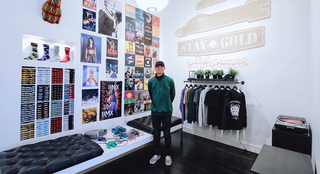Ten years ago, I was your typical middle school student infatuated with streetwear. In 2006, wearing The Hundreds, Huf, and Supreme to school made you one of the cool kids. Most of my friends had no knowledge of this fashion subculture I felt so integrated into. Just like any 12-year-old, I was searching for a sense of identity. The lack of like-minded people around me led me to the Internet, where my daily after school routine consisted of checking Bobby Hundreds’ blog, Niketalk, Sole Collector, Hypebeast, and lurking on the Myspace streetwear forums (shoutout to Fongstarr). I started camping out for limited releases, visiting local boutiques, and checking out streetwear events. Eventually, I wanted to take the next step and contribute to the culture rather than just being a spectator. In 2009, I officially started my brand, effulgence. Streetwear went from being my personal hobby to being my passion in life.
Two years later, I attended Benny Gold’s flagship grand opening on 16th Street in San Francisco with no other reason than to simply support one of my favorite designers and hope to gain some guidance for my brand. Unfortunately, I was too shy to introduce myself to Benny and missed out on a great opportunity. Fast forward to 2016—now I have the honor of being the first brand to have a pop-up shop at Benny Gold.
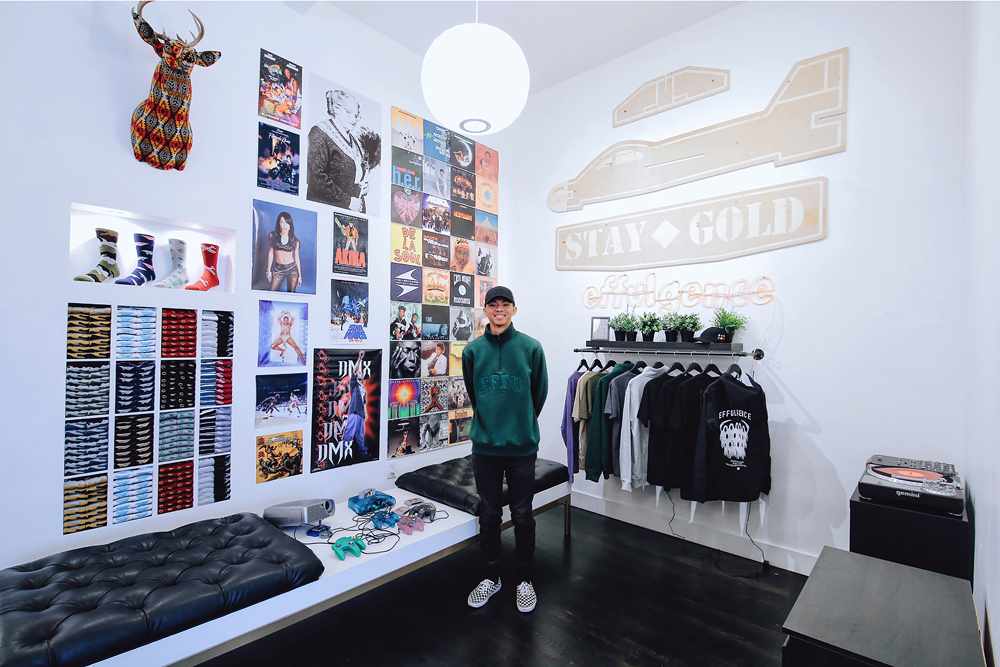
effulgence head honcho and jack of all trades Stephen Hung.
From the beginning, I always knew the mantra for effulgence. “effulgence” means radiant, splendor, or brilliance, and it’s most commonly seen when writers refer to the sun. I twisted the definition to give it a new meaning. To me, effulgence means to constantly strive to reach your state of brilliance. I never want to settle or be complacent—I always want to improve in every aspect of my life. Although I knew what the brand stood for, I lacked a creative vision for effulgence—my brand was all over the place aesthetically. I made tees inspired by sports, cartoons, music, landscapes, skateboarding, and pretty much anything else I could think of at the time. But it wasn’t a brand. It was simply me slapping cool graphics on tees. I was less concerned about saying something with the clothes I made, and more focused on making my brand successful. It took a while to realize that those two components go hand in hand.
As the brand matured, I naturally found a way to be more cohesive with my work. Rather than creating random designs that held no relation to one another, I centered my brand around the things that had a huge influence on me as a child—what got me into streetwear in the first place. I remember popping in my first hip-hop CDs (Murs’ Murray’s Revenge & Crown City Rockers’ Earthtones) in the boombox and waking up right before 9am to catch the latest Pokemon episode on WB Kids. It felt personal and timeless. After reminiscing, I realized how important those feelings truly are. I wanted to bring that same sense of nostalgia to my brand. With the pop-up shop, a recent Hypebeast Instagram feature, and this The Hundreds article, I’m finally starting to accomplish what I originally set out to do. But it was a long road to get here.
“Although I knew what the brand stood for, I lacked a creative vision for effulgence”
Let’s jump back to the beginning of effulgence. One of the first things I had to do was find a manufacturer to print on my T-shirts. Keep in mind, there weren’t as much accessible resources seven years ago, making this process even more difficult. In addition, not knowing printing terminology made it that much harder talking with manufacturers. My first T-shirt printer knew I was young and lacked knowledge—and he took advantage of me. I had no idea what Pantone colors were, so my first batch of shirts were in different hues. I had no idea what the process of screenprinting was, and had a bunch of designs that weren’t printable due to the massive amount of colors.
For example, I had a Warhol-inspired design with over 12 colors, making this order extremely costly because, in screenprinting, you pay per a color. Looking back now, I realize that I could’ve executed these designs through direct-to-garment printing, but my first manufacturer wanted my business and didn’t tell me this since he didn’t offer that service. Not only did my lack of knowledge put me at a disadvantage, my lack of social skills kept me from dealing with confronting the people I did business with. Time and time again, my orders were incorrect, but I simply didn’t know how to handle the situation.
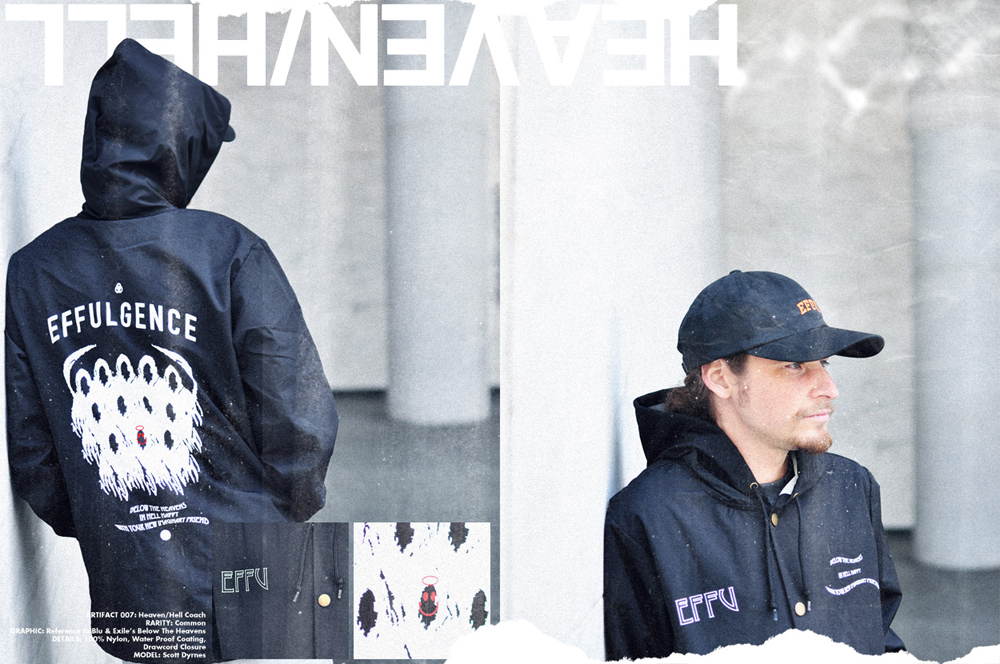
Lookbook excerpts from effulgence’s most recent collection, SS’16. Shot and edited by Stephen Hung.
One day, I received an invitation to take part in a pretty huge trade show. I thought this was my big break, considering I’d be sharing the floor with some of the biggest brands in the game. I felt so accomplished—this was it. I knew how it would all unfold. I had a vision that my booth would be packed with store representatives hoping to wholesale all of my product. Needless to say, things didn’t pan out as I expected. Not attending a trade show previously, I already set myself up for failure. I didn’t have a line sheet, I didn’t contact buyers (I assumed they’d contact me), I didn’t bring hangers for the booth or a steamer to iron the clothes—it’s definitely safe to say I was a little unprepared.
Additionally, I was placed at the far end of the convention center where there was zero foot traffic. The only people sitting at my booth’s table were my friends and one brand rep next door. At the very least, I was confident about my product. I had four sample hats made with imported fabric from denim, wool, camouflage, and leather; an intricate six-colored tee with a flipped Mona Lisa graphic that had a graffiti dripped layer effect; and a burgundy and white football style jersey with 3030 on the front and “Galactic Rhyme Federation Champion” on the back to reference Deltron’s classic concept album. The fact that no buyers even saw my designs made the trade show pointless. To this day, I still consider the trade show the biggest blow to my brand, considering I had to travel from the Bay to LA and it put me thousands of dollars in debt. After my defeat at the hands of a trade show, I retreated back to the Bay and attempted to figure out what to do next.
“To this day, I still consider the trade show the biggest blow to my brand”
In my opinion, collaborating is one of the fundamental reasons why anyone starts a brand. To work with like-minded people and to share each other’s platforms for exposure is truly amazing. Unfortunately, there are a lot of logistical difficulties associated with collaborations that people don’t discuss. There was one instance where I didn’t work with the collaborator directly, but rather, their management team. In actuality, I was designing and conceptualizing everything and the management team was just there to give a yes or a no. I don’t know about you, but that’s not what I would call a collaboration. Although this doesn’t seem like it would create issues, it certainly did.
I expected a big push for my brand, but instead, I only got one social media post. And as if that wasn’t bad enough, it was tagged to the wrong brand. To top it off, none of the members of the collaboration wore the product because the management team didn’t even give them any. In the end, it turned out to be another small push that required a huge amount of time and work. In other words, I felt like my efforts weren’t rewarded at all. After this experience, I learned that a collaboration can only do so much, and that most of the time, it won’t elevate your brand unless a big name celebrity is endorsing you regularly.
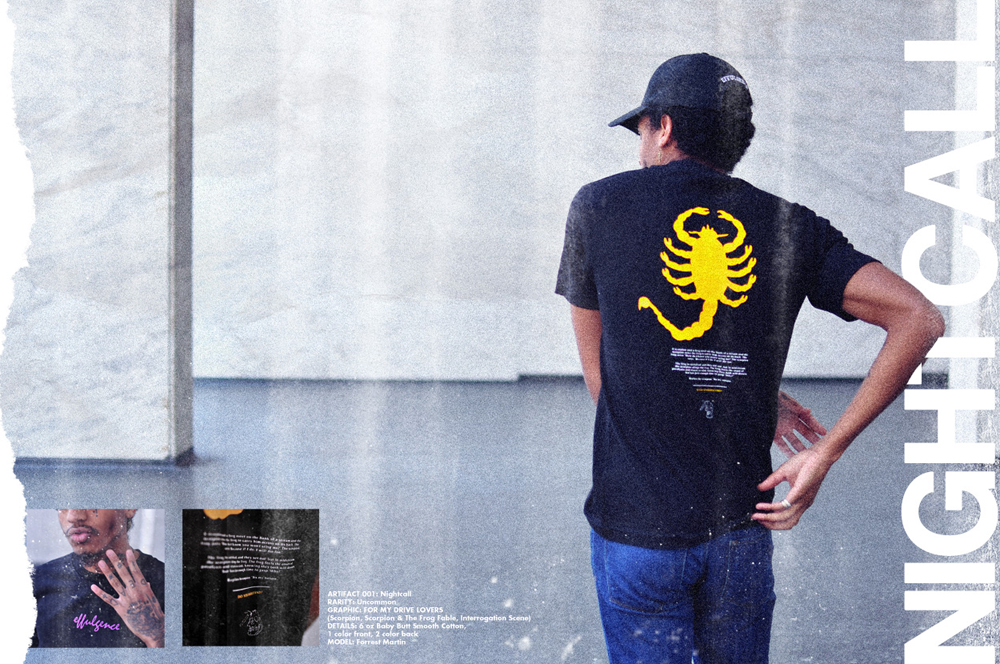
effulgence SS’16.
At this point, I was done. The frustration of having done so much to further my brand and not gaining any real success/momentum resulted in me feeling completely lost. I had nowhere else to go and I had no clue about what I was supposed to do. Just keep dropping pieces and hoping it would eventually work out? How long would that take? Is it even worth it? These are all the questions that ran through my head, and I had no one to answer. I didn’t have a mentor. I didn’t even have a family member or friend who could point me in the right direction, so what was I supposed to do? Even though I was going through many struggles with the brand, I knew I couldn’t give up. I had to keep a positive mindset. I didn’t know where effulgence was headed, but the mentality that kept me going was that you never know when something amazing is just around the corner. It could happen the next day. But you can’t just sit and wait for it, you have to go out and get it.
I specifically attended San Francisco State University with the intent of being face-to-face with the streetwear culture instead of an outsider looking in. But just being in San Francisco wasn’t going to help. I had to network. I just didn’t have a starting point. As a matter of fact, I had zero connections within the industry. So instead, I shifted my focus to educating myself and searching for guidance.
“If you’re reading this, don’t be that guy”
I heard Benny Gold was hosting a Q&A at his shop. I knew I wanted to attend, and this time, I was going to speak up. After the Q&A, I approached Benny and gifted him an effulgence tee. I asked him what someone would have to do to get a job at his shop and his reply discouraged me. He basically told me that they only hire people who are referred to from their current employees, which is honestly pretty standard in streetwear from my experience. At the end of our conversation, Benny encouraged me to come by the shop to see if I vibe with the team. I didn’t follow up on Benny’s invitation. I didn’t want to be that annoying guy that hangs around the shop all the time and doesn’t actually buy anything. You don’t want to be that guy. Everyone hates that guy. If you’re reading this, don’t be that guy.
Six months later, I sort of became that guy. Without a position even open, I dropped off my resume off at Benny’s flagship store. But that wasn’t enough. I needed to stand out. I wanted to find Benny’s warehouse. I did some detective work and noticed an address and a unique sign that could possibly be the location of his warehouse in one of his Instagram photos. I used Google’s Street View and went down street after street until I found the matching address and sign. I found his warehouse! I visited Benny’s shop and warehouse once a week for a month inquiring about any open positions. I didn’t get anywhere until, one day, Benny came to the door and said I could come inside. It was then I gave an elevator pitch for why I wanted to intern there. He gave me the okay to help out just for that day. Pretty soon, I was officially hired as a Benny Gold intern.
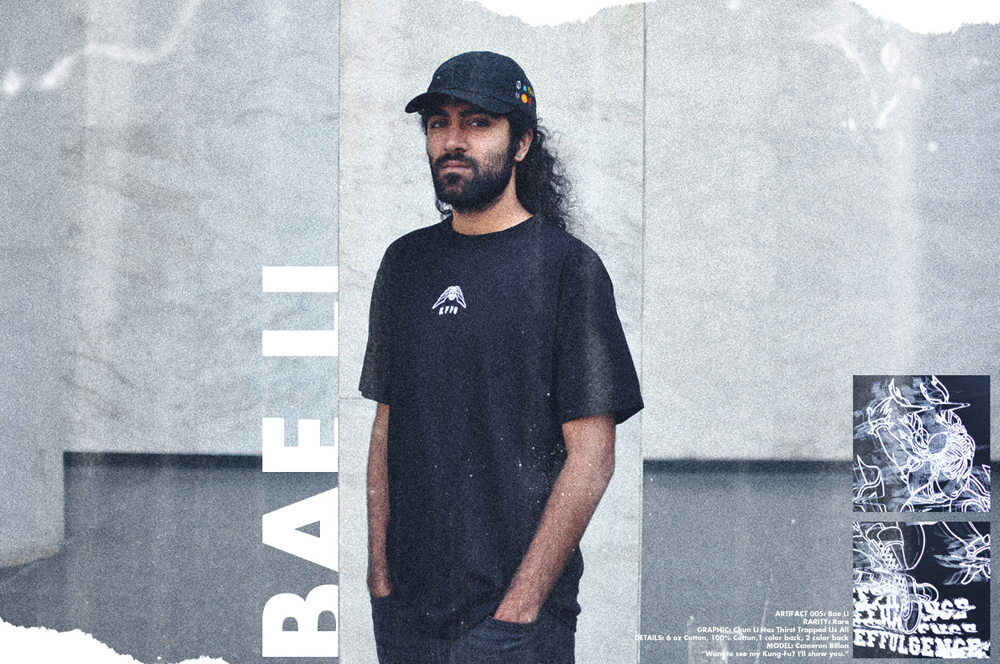
I wanted to make my internship experience as valuable as possible. Whether it was shipping orders, consolidating boxes, or painting an extra coat of white paint on the warehouse walls, I was willing to do anything to learn the ins and outs of running a streetwear brand. Even if these tasks didn’t lead to designing next to Benny or becoming a paid employee, I wanted to do as much as I could. I used every opportunity—daily lunches, ginger shots with Benny, Bart commutes with employees, collaborating on basement inventory—as a learning opportunity. And no, I didn’t get paid throughout my year of interning.
“I wanted to show people that all big ideas have a starting point”
When my internship ended, I moved back to the East Bay. Four months later, Benny called me needing an extra hand. Of course, I said yes. I became an on-call employee for the next couple months. I mentioned to Benny I wanted to do a pop-up for my brand, and he offered me his space if I complete this task—count inventory for all of his Fall/Winter products in three days. I accepted without hesitation and completed the challenge with the help of my co-workers.
Of course, it’s not enough to just have a pop-up—you have to make it count. I wanted the theme of my pop-up shop to show where everything for my brand started. I wanted to show people that all big ideas have a starting point. For me, my bedroom was that starting point. It was the place where I could be the most creative. It was the workshop where I developed my craft as a designer. It was the warehouse where I shipped out all of my orders. It was the studio where I took all of my product shots. It represents all of the inspiration I put into my brand, and I wanted to share that with everyone.
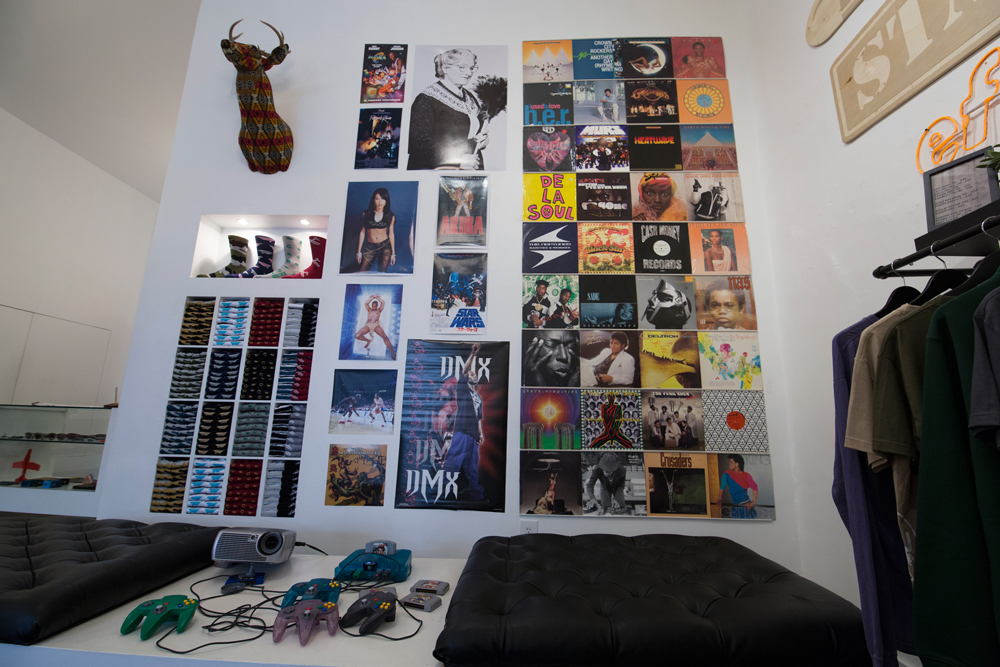
The effulgence pop-up at Benny Gold.
Being a broke college grad, I conducted days of research to execute as much “DIY” as possible to find cheaper alternatives to build the pop-up. For example, to make the neon sign, I had to buy specialized glue from Home Depot, take a day trip to Oakland to buy neon wire, and go to Kinko’s to print the template for the effulgence logo. The next struggle was promoting the event. Being scarred from my previous failures, a real fear had sunk into my mind that no one would attend.
In order to ease my anxiety, I mixed a grassroots marketing approach with the standard social media techniques I was already implementing. I went to almost every streetwear store that I knew in the Bay and just started talking with employees and handing out flyers. Although it was a slow way of getting the word around, I genuinely enjoyed connecting with like-minded individuals. Before I knew it, the day of the pop-up shop had crept up on me, and I still had no idea what to expect. At this point, I did all that I could, and I had to leave the rest to fate.
“It’s crazy to believe this all started from a 16-year-old’s bedroom”
After the event, Benny Gold told me, “This is one of the best parties we’ve ever had.” A-Plus from Hieroglyphics said, “I had to come out to show my love and support to the effu crew,” and a fan asked, “It’s such an honor to meet you, can I take a picture with you?”
The pop-up shop opening party exceeded my exceptions in every way. The event ended up being three hours of funk vibrations, great company, and positive energy. Being able to meet so many people who have supported effulgence was truly an unparalleled feeling. I can honestly say it was a dream come true. The culmination of six-and-a-half-years of hard work, persistence, and passion had finally paid off, but the grind is no where near done. I have a long way to go before I can make this my living, but this milestone will serve as a reminder to keep pursuing my effulgence. It’s crazy to believe this all started from a 16-year-old’s bedroom, but I guess the cliche still holds true: You can do anything if you put your mind to it.
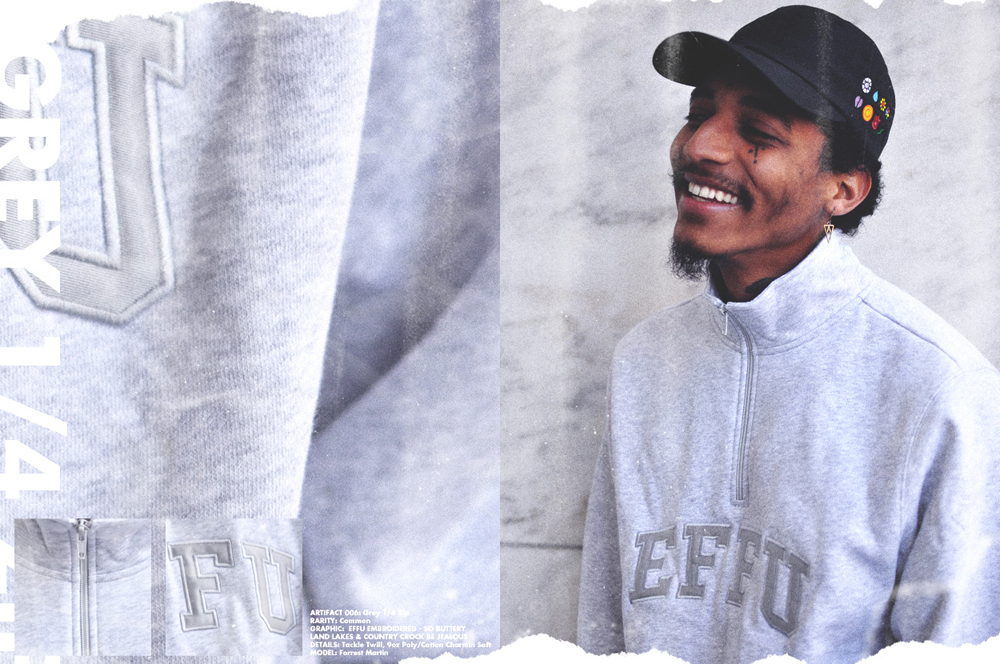
TAKEAWAYS
1. No excuses -Everything I’ve done for the brand has been solely operated by me since the beginning. I had to wear many hats throughout my journey. Although, I didn’t set out to be a photographer, a businessman, or a printer, I had to become these out of necessity for my brand. I didn’t let the lack of resources be an excuse for not pursuing my passion and neither should you.
2. Be Genuine – Having good people skills and confidence goes a long way. With all my business relations, I put effort into getting to know others on a personal level. Make lasting connections, you never know where they can lead to in the future.
3. Persistence – Despite Benny not having a job opening and knowing the low probability of landing an internship, I didn’t let that stop me from trying. The worst thing someone can tell you is “no.”
4. Timing Is Everything – It’s not a race, it’s a marathon. Don’t try to rush your success. Trust that opportunities will present themselves to you when they need to as long as you stay consistent with the grind.
***
effulgencesf.com. Keep up with Stephen Hung and effulgence via Twitter @effulgencesf and Instagram @effulgencesf

